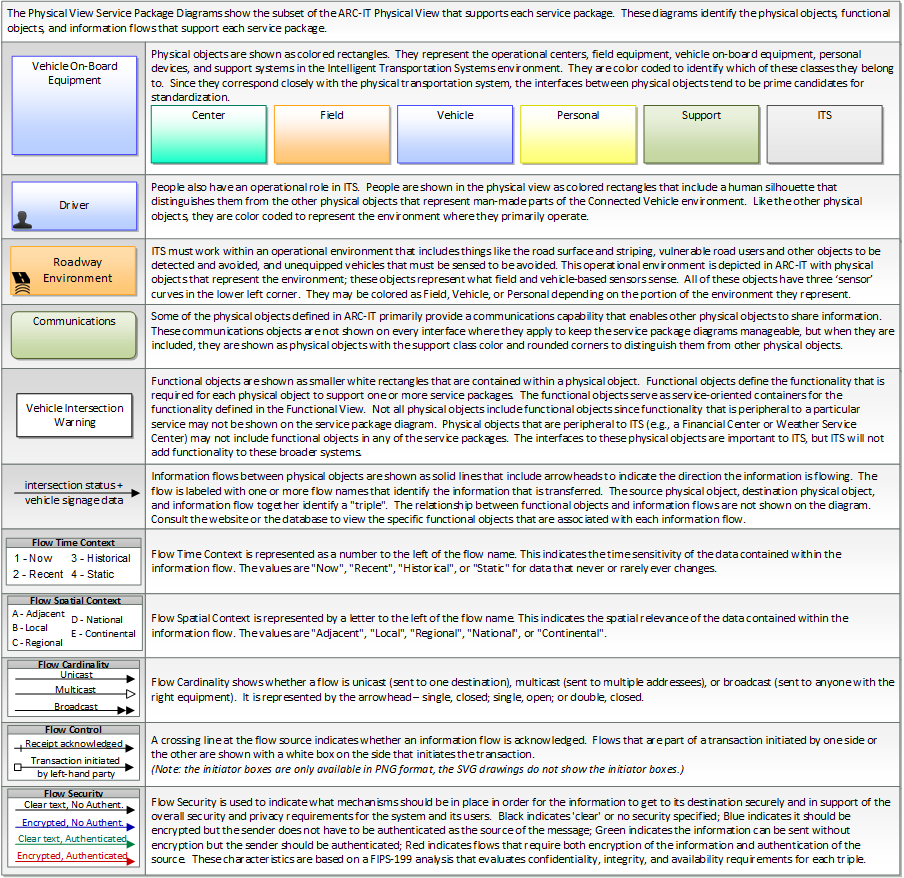TM01: Detector-Based Surveillance
Infrastructure-based traffic detectors (e.g., inductive loops, machine vision, radar, acoustic detectors, etc.) are used to monitor traffic and collect traffic data that is used to support traffic operations and traveler information systems.
Relevant Regions: Australia, Canada, European Union, and United States
- Enterprise
- Functional
- Physical
- Goals and Objectives
- Needs and Requirements
- Sources
- Security
- Standards
- System Requirements
Enterprise
Development Stage Roles and Relationships
Installation Stage Roles and Relationships
Operations Stage Roles and Relationships
(hide)
| Source | Destination | Role/Relationship |
|---|
Maintenance Stage Roles and Relationships
Functional
This service package includes the following Functional View PSpecs:
| Physical Object | Functional Object | PSpec Number | PSpec Name |
|---|
Physical
The physical diagram can be viewed in SVG or PNG format and the current format is SVG.Physical diagrams have not been developed for this application yet.

Includes Physical Objects:
| Physical Object | Class | Description |
|---|
Includes Functional Objects:
| Functional Object | Description | Physical Object |
|---|
Includes Information Flows:
| Information Flow | Description |
|---|
Goals and Objectives
Associated Planning Factors and Goals
| Planning Factor | Goal |
|---|---|
| D. Increase the accessibility and mobility of people and for freight; | Reduce congestion |
| F. Enhance the integration and connectivity of the transportation system, across and between modes, for people and freight; | Enhance integration and connectivity |
| G. Promote efficient system management and operation; | Improve efficiency |
| J. Enhance travel and tourism. | Support travel and tourism |
Associated Objective Categories 
Associated Objectives and Performance Measures 

Needs and Requirements
| Need | Functional Object | Requirement | ||
|---|---|---|---|---|
Related Sources
| Document Name | Version | Publication Date |
|---|---|---|
| Model Systems Engineering Documents for Traffic Sensing and Detection Systems (TSDS) | 1.0 | 5/1/2021 |
Security
In order to participate in this service package, each physical object should meet or exceed the following security levels.
| Physical Object Security | ||||
|---|---|---|---|---|
| Physical Object | Confidentiality | Integrity | Availability | Security Class |
| Security levels have not been defined yet. | ||||
In order to participate in this service package, each information flow triple should meet or exceed the following security levels.
| Information Flow Security | |||||
|---|---|---|---|---|---|
| Source | Destination | Information Flow | Confidentiality | Integrity | Availability |
| Basis | Basis | Basis | |||
| Security levels have not been defined yet. | |||||
Standards
Currently, there are no standards associated with the physical objects in this service package. For standards related to interfaces, see the specific information flow triple pages.
Needs and Requirements
| Need | Functional Object | Requirement | ||
|---|---|---|---|---|
System Requirements
| No System Requirements |